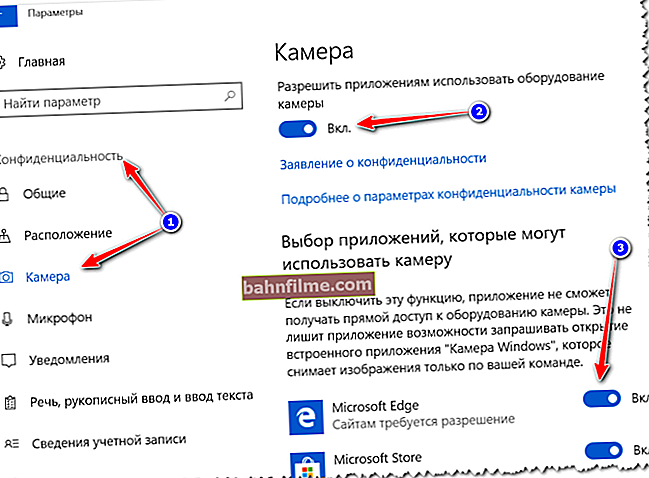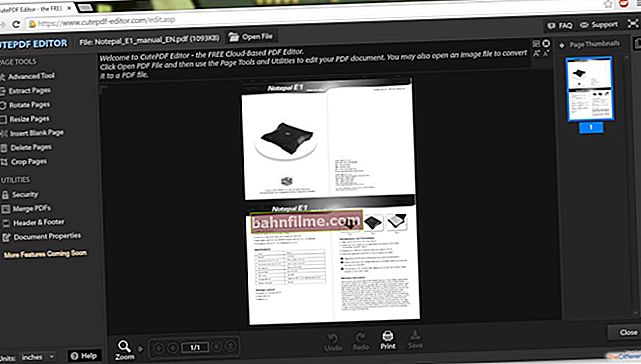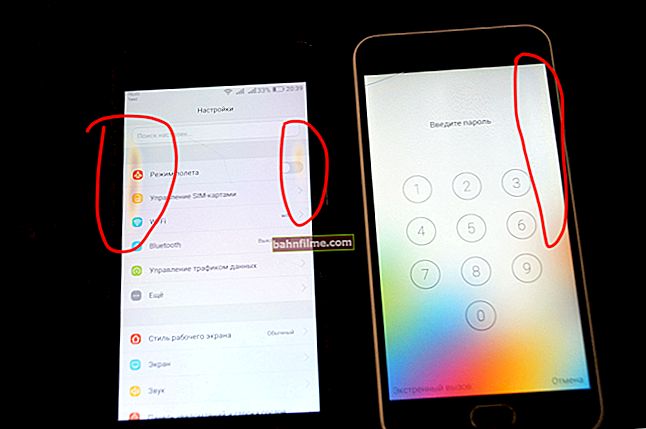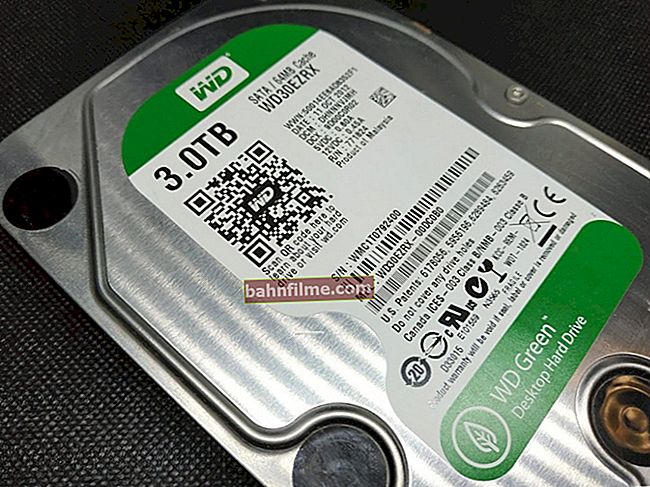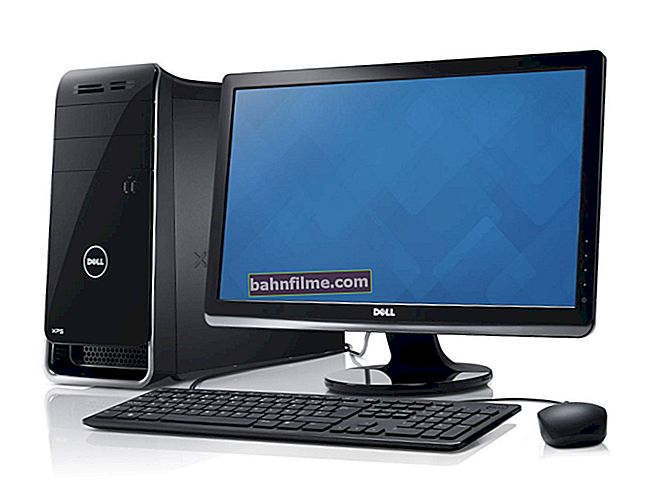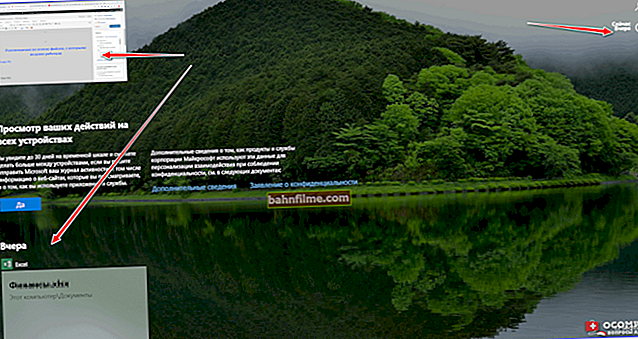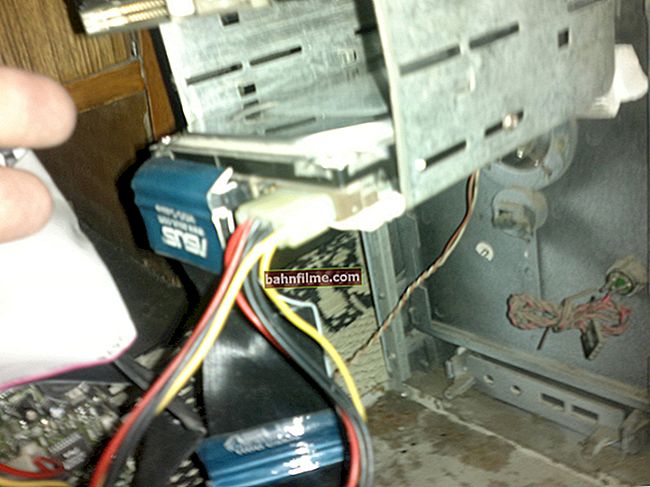
Good hour everyone!
Needless to say, a lot depends on the video card driver: the image quality on the screen, resolution, colors, the number of FPS in games, etc.
And the quality of the picture on the screen depends not only on a pleasant pastime, but also on our eyesight. That is why you need to update and configure your video card driver correctly!
In addition, in some cases, the user has no choice: for example, if an error starts to take off, that "The video driver has been stopped ... ".
But I must say right away that updating the driver is not always easy. Quite often they send me questions about the impossibility of removing the old driver, how to find out the model of the video card, which version to choose, etc. I will try to answer all these related questions here ...
Note!
The article covers video cards: AMD, NVidia and IntelHD. The information is relevant both for laptops and ordinary computers.
*
All steps to update the driver for the video adapter
Preparation number 1: find out the model of the video card (including the laptop model)
Perhaps this is the first question where you should start this article. To download the correct driver for your PC / laptop, you need to know the exact model of the video card, the version of Windows OS (in some cases, you need a laptop model).
In order to find out which video card is on your computer, you can resort to several methods.
Method number 1
You can find out by opening Device Manager. To do this, press the combination of buttons Win + R and enter the command devmgmt.msc - press Enter.

Launching Device Manager - devmgmt.msc
Next, you need to open the tab "Video adapters" and see what is there ... In my laptop, for example, there are 2 video cards installed: IntelHD Graphics 5500 and NVIDIA GeForce 920M (see screenshot below).
Note: the model of the video card is not always shown in this tab, it may be that you will see a simple one, something like "Standard VGA video driver", etc. In this case, see the second method.

Method number 2
It is very convenient to find out most of the characteristics of a computer using special utilities. I talked about them in this article: 👉 //ocomp.info/harakteristiki-kompyutera.html
For example, the HWiNFO utility - after launching, it will automatically show the model of the processor, video card, Windows OS version, i.e. everything you need to know to find and install the driver correctly (see the screen below: everything you need is highlighted in yellow).

Note: if your device has multiple video cards, pay attention to the switch GPU # 1, GPU # 0, etc. - located under the video card logo. To see the characteristics of another video card - just switch GPU # 1 to, say, GPU # 0.
ADDITION
If you have a laptop, then to find a driver you will need to find out its model. You can find out how to do this in one of my articles, the link below.

👉 How to find out your laptop model: where to see the exact modification - //ocomp.info/kak-uznat-model-noutbuka.html
*
Preparation # 2: find out the version of Windows
Method number 1
It is enough to open 👉 the control panel at:
Control Panel \ System and Security \ System
(Or in "My Computer", right-click anywhere, and then select properties from the menu that appears)
The window that opens will show the Windows version, its bit depth, processor model, and the amount of RAM. In general, everything that is needed (example below on the screen).
Note: if you do not have an official version of Windows, keep in mind that some "builders" of such operating systems put inaccurate information into this window. That is, instead of Windows 7 - Windows 10 may "burn" here (although it is not!).

Method number 2
More reliable than the first ...
First, open the command line: you can through the START menu, you can press the combination of buttons Win + R , and enter the command CMD , press Enter.
👉 Reference!
Several ways to open Command Prompt in different Windows
On the command line, write the command systeminfo and press Enter. After 10-15 seconds.you will receive all the necessary information (see the screen below).

Method number 3
You can use the specials. utilities, for example, HWiNFO ... The link to the utility was given above (see about determining the model of a video card), and also gave a screen of where and what to look at ☝.
👉 To help!
I will also give below a link to a supplementary instruction article on this matter ...
How to find out what Windows OS I have - //ocomp.info/kakaya-u-menya-windows.html
*
Option number 1: downloading and updating the driver from the official website
Here I have provided several tables with useful links to official sites. But first, I will say a few words about choosing a driver version, and what needs to be done before direct installation.
About choosing a driver version
It is not always easy or easy to select a driver version that works fine. Now it's better with this, but 10 years ago, for example, the ATI Radeon 9x lineup was very moody ...
If there are several driver versions on the official website of your hardware manufacturer, download both of them (one is the newest).
Next, install the new version and see if everything is in order, everything works. If there are any errors (for example, games crash), then try reinstalling the video driver and installing an older version. In some cases - it works much better ...
For laptop users: I recommend that you first download the video driver on the website of your device manufacturer. Those. if you have an ACER laptop and an AMD video card (say, for example), then first go to the website of the manufacturer of your laptop (i.e. ACER) and download the driver for the video adapter there (and only then, if it does not work, go to the AMD website) ...
The fact is that laptop manufacturers often optimize the driver for a specific device model (which will avoid all sorts of errors and conflicts).
♦
About driver backup
If you already have some video drivers in the system, and they work tolerably well, then before updating, I recommend that you make a backup (i.e., a backup copy).
It will come in handy in cases when new drivers get crooked, or conflict (this does not happen so often, but when it happens, you often regret that you did not make a backup copy).
👉 To help!

How to backup drivers in Windows - see this article
♦
Remove the old driver before updating
After downloading several versions of the drivers, a backup of the old ones was made, I recommend completely and completely removing the old driver from the system. If this is not done, then quite often errors occur during the installation process and new drivers get crooked, or an error occurs during installation about the impossibility of performing the installation.
Also, if this is not done, then it often happens that you "allegedly" updated the driver, but are using the old version ...
👉 To help!

How to remove the video driver from the system completely - see here (for AMD, IntelHD, NVIDIA)
♦
Table 1: links to official sites for downloading video drivers.
| Manufacturer | Link / Description |
|---|---|
| AMD
ATI Radeon
| //www.amd.com/ru/support There are two types of driver search and installation:
|
| NVIDIA
GeForce
| //www.nvidia.ru/drivers You can automatically determine which driver is needed (JAVA must be installed on the PC). You can manually specify the video card model and OS version. Also on the site are available old archived versions of drivers, and beta versions. |
| IntelHD
| //downloadcenter.intel.com/ru/product/80939/- Everything is simple here: specify the version of Windows OS, the model range of the video card and the type of the downloaded file: the site automatically finds you the most optimal version of the driver. |
Table 2: links to the official websites of laptop manufacturers. You can always download optimized drivers on them.
| Manufacturer / model range | Link to the official website |
|---|---|
| Acer
| //www.acer.com/ac/ru/RU/content/drivers |
| Alienware
| //www.dell.com/ |
| Asus
| //www.asus.com/ru/support/ |
| Dell
| //www.dell.com/ |
| DEXP
| //dexp.club/ |
| Fujitsu
| //www.fujitsu.com/ru/support/ |
| HP
| //support.hp.com/en-us/drivers |
| Lenovo
| //support.lenovo.com/ru/ru/ |
| MSI
| //ru.msi.com/support |
| Packard bell
| //www.packardbell.com/ |
| Panasonic
| //rus.panasonic.ru/download/driver/ |
Prestigio | //www.prestigio.ru/support |
| Samsung
| //www.samsung.com/ru/support/ |
| Sony
| //www.sony.ru/ |
| Toshiba
| //support.toshiba.com/drivers |
By the way, on the official websites of laptop manufacturers there are special utilities that can automatically detect your device model (and Windows OS), and download all the necessary drivers.
*
Help: how to upgrade to an old video driver
Sometimes, a new driver may start to behave unstably, for example, errors may appear, freezes in games, something will not work, etc. In this case, it is necessary to return to work on the old video driver.
How to do it? There are several options:
- use the specials. backup utilities (I recommended this just above in the article);
- if there is a restore point in Windows, then you can use it. You can learn how to restore Windows from this article: //ocomp.info/vosstanovlenie-windows-10.html
- you can initiate a driver update through the device manager, and then manually specify the version you want ... I will show below how this is done.
First you need to open device Manager ... Just go to the Windows Control Panel, then use the search in the top menu. See screenshot below.

How to open the device manager
Next, select the video adapter, right-click on it and select from the menu "Update driver" (see screenshot below).

Update Driver // Device Manager
Then indicate that a driver search will be performed on this computer.

Search for a driver on this computer
Then click, select the option to update the driver from the list available on this computer.

Select a driver from the list of available
Well, further, you should have a direct list of available video drivers. Typically, it has a "Basic Video Adapter (Microsoft)" and 1-2 excellent drivers (maybe more). See example below.
Actually, choose another version of the driver from the list and continue the installation.

Several driver versions to choose from ...
*
Option number 2: automatic search and update of the video driver
Method number 1
With the help of special utilities that can quickly and efficiently find, download and install drivers (along the way making a backup of old ones), you can completely forget about this problem. One such utility is Driver Booster.
Driver booster
Download from official. site: //ru.iobit.com/driver-booster.php
A program to quickly and easily update all drivers on your system. For its work, it is necessary to have an Internet channel, all the rest - it takes over.
In 1-2 clicks, you can easily update all drivers and forget about such a problem once and for all! The program is completely in Russian, so I don’t comment on how to use it ...
The screenshot below shows a window offering auto-update of outdated drivers in the system. You only need to press 1 button!

Note!
I also have an article on my blog with the best utilities for automatic driver updates. If the Driver Booster utility did not suit you, you can use its counterparts ...
Method number 2
You can update the driver without utilities, Windows itself can do this. True, there is one small drawback (and in my opinion, significant): when updating in this way, the video driver control center is not installed (and thanks to it, the driver can be fine-tuned for yourself).
To update - open the device manager. To do this, press the combination of buttons Win + R , enter the command devmgmt.msc ... You can also open it through the control panel.
Then open the tab "Video adapters" , select the desired one and click on it with the right mouse button: from the menu, select "Update drivers ..." .

Then you choose where Windows will look for drivers: either an automatic search on the Internet and on a PC, or manual (then you need to specify it yourself). We select the first (that is, automatic) and wait for the end of the wizard.

You can find out more about all the options for installing video drivers in the article at the links below.
👉 To help!

How to install drivers on a computer, laptop - step-by-step instructions
*
That's all for today, easy installation and updating for everyone.
Have a nice day!
👋
First publication: 24.09.2017
Correction: 01/30/2020



















